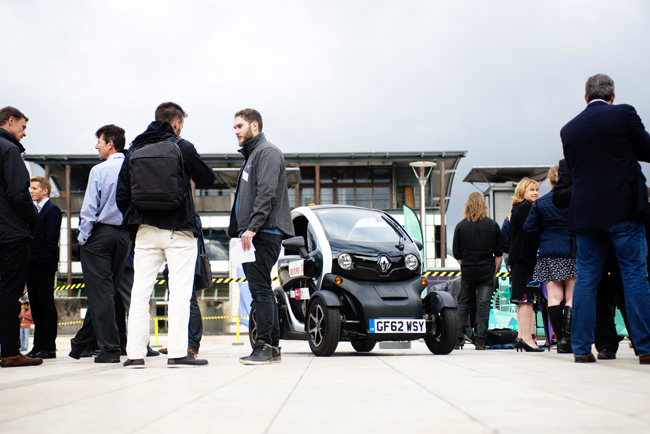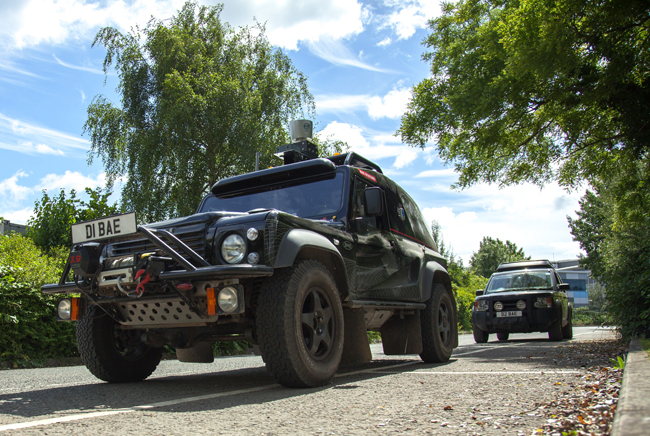
Connected and autonomous vehicles are an exciting development in the ITS sector – but amid the hype some big questions about their deployment remain unanswered, finds Ben Spencer
Connected and autonomous vehicles (C/AVs) have the potential to change the way we travel - and to eliminate road fatalities. But policy makers and regulators will need to ensure user and public safety is included in future planning. The legal and insurance industries will have to catch up, too. For example, questions over who is liable in the event of a collision - and under what circumstances they are protected by insurance - are key areas which still need to be addressed.
Venturer, a consortium of public and private companies, and academics, has been set up to do just that, as part of a £5m research and development project to explore the future of C/AVs. Daniel O’Byrne, insurance technical lead at AXA (part of the consortium), says that there will be no real difference in how insurance is procured going forward.
“You take out insurance and if there is an accident in what is termed an AV when it is in autonomous mode your insurer has a strict liability to pay out,” he explains. “It is then for us to take that behind the scenes and have a look at whether there are rights of recovery and that’s easy for us to do.”
Emerging law
Meanwhile, level 4 introduces a high level of automation, and that is “the point we’re talking about the new legislation kicking in”.
O’Byrne warns consumer trust could be lost. “If we’re not clear about the framework in which it’s capable of operating and what you - the driver or passenger - are allowed to do in those circumstances, then you run the risk of undoing some of the good work that projects like Venturer have done,” he says.
Brian Wong, legal technical advisor for Burges Salmon (Venturer’s legal partner) believes the main insurance and legal issues are linked – such as issues of third-party coverage and ability to claim. “Then there’s own liability and insurance for those who are driving - and passengers, what their liability and insurance condition looks like.”
There is an issue around ‘who’ the driver actually is. Responsibility is more straightforward at either the zero-automation or level 5 ends of the spectrum – but there is a major ‘grey area’ in the levels of partial or conditional automation. “Where we are currently level 2 and 3 and going into level 4, there are potential scenarios where the question of who is driving may throw up some difficult areas,” he says.
Legislators all over the world are wrestling with the issues. For instance, the UK parliament’s Automated and Electric Vehicle (AEV) Bill suggests that insurers will be the primary point of recovery for a third party who is injured in a level 4-5 vehicle while it is driving itself. “Ultimate legal liability and recovery from product manufacturers and OEMs
(original equipment manufacturers) can be dealt with below the water line and it doesn’t need to worry most members of the general public,” says Wong.
Referring to the Burges Salmon’s report Driverless cars: liability frameworks and safety by design, Wong emphasises the need for product liability and product safety regimes to adapt to deal with the new world, such as: “The Internet of Things-type technology where the product delivered to you is not necessarily the finished product that rolls off a factory line and that the OEM doesn’t need to worry about it. For lawyers, we hope that product safety and liability changes significantly rather than just to cope with the new type of product which AV represents.”
Machine control
The report raises the possibility of industry working together to simplify the recovery process. The report addresses two baseline scenarios: what happens when a driver makes a mistake today and what happens if there is a product malfunction issue. The document raises the question of what happens when a machine hands over control to a human when that individual has been disengaged from driving for a while. Wong insists there should, in theory, be a standard which dictates what a safe handover looks like.
“One thing that came out of Venturer is that it’s quite difficult at the moment to determine what a safe handover process might look like and that raises questions for level 3 vehicles.”
The report also looks into what happens if the software is not updated in the car: “There’s some wording in the Bill which says, if customers don’t keep their safety-critical software updated, they may incur personal liability and not be insured.”
Going forward, Wong says greater clarity around level 3 is necessary – for example, how owners of a level 3 vehicle are treated when it comes to liability and insurance. However, it may be that government intends OEMs to clear up that uncertainty.
Safety-critical
Meanwhile, product legislation around safety by design needs to be made explicit for automated vehicles. Adopting this approach, according to Wong, would require building appropriate failsafes and processes which make accidents and unsafe use less likely - if not impossible.
“For software, we like some of the government believe, notwithstanding there’s some wording in the AEV Bill about the responsibility of a driver who fails to update his car, would make the point that safety by design would require OEMs to take control of safety-critical updating.”
Through automating as much as possible, a car would know its safety-critical software is not up to date and should not permit automated vehicle driving to become activated.
The company believes cars should be designed to take external conditions as they would reasonably expect to find them.
“The obligation ought to be on OEMs when they put AVs onto the market and onto the roads so that systems should be able to deal with potholes and loss of mobile signal rather than expecting perfect conditions all the time.”
Finding the level
Level 1:
The driver and the automated system share control of the vehicle in situations such as adaptive cruise control, where the driver controls steering and the automated system controls speed.
Level 2:
The automated system takes full control of the vehicle including accelerating, braking and steering. The driver must monitor the driving and be prepared to intervene at any time if the automated system fails to respond properly.
Level 3:
The driver can safely turn their attention away from the driving tasks while the vehicle handles situations which call for an immediate response. The driver must still be prepared to intervene within some time-limited period specified by the manufacturer, when called upon by the vehicle.
Level 4:
As level 3, but no driver attention is required for safety, allowing them to go to sleep or leave the driver seat. Self-driving is supported only in limited spatial areas (geofenced) or under special circumstances such as traffic jams. Outside of these circumstances, the vehicle must be able to abort the trip and park the car if the driver does not take back control.
Level 5:
No human intervention is required.












